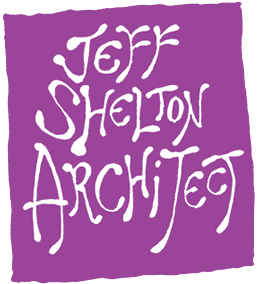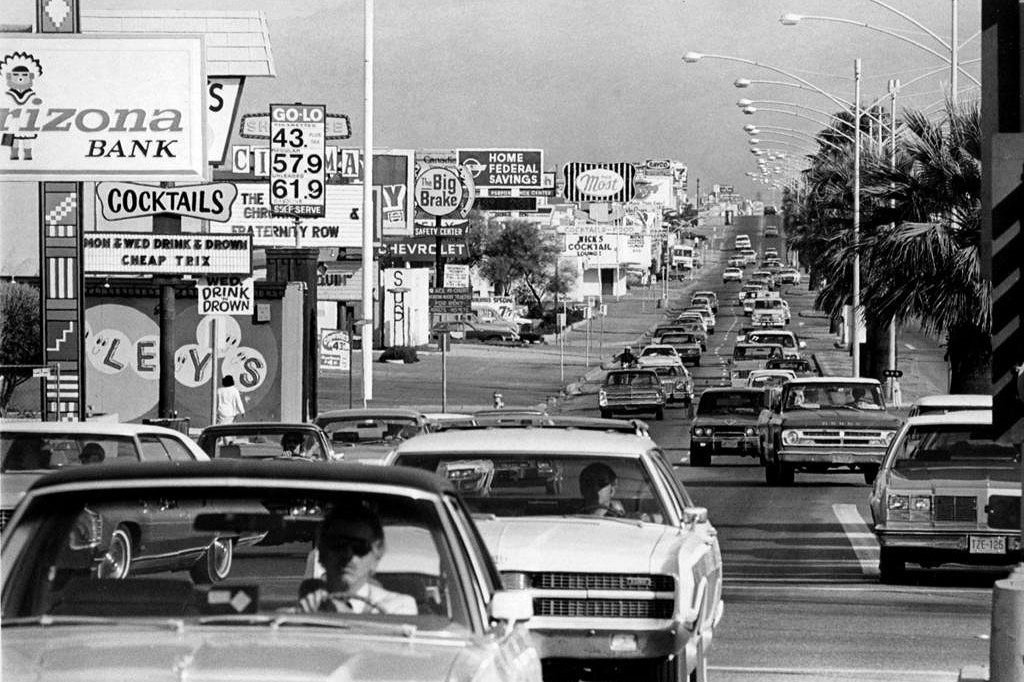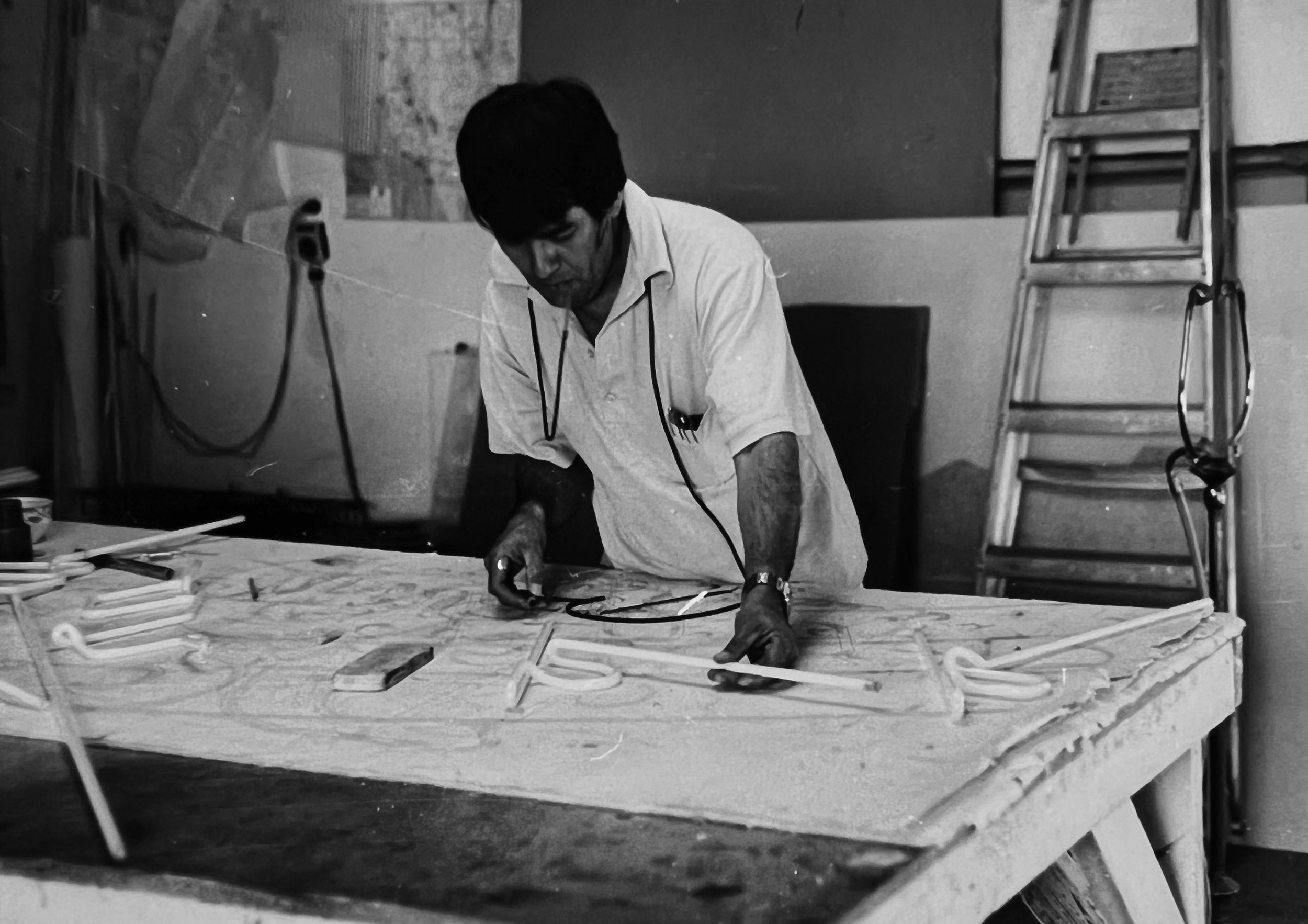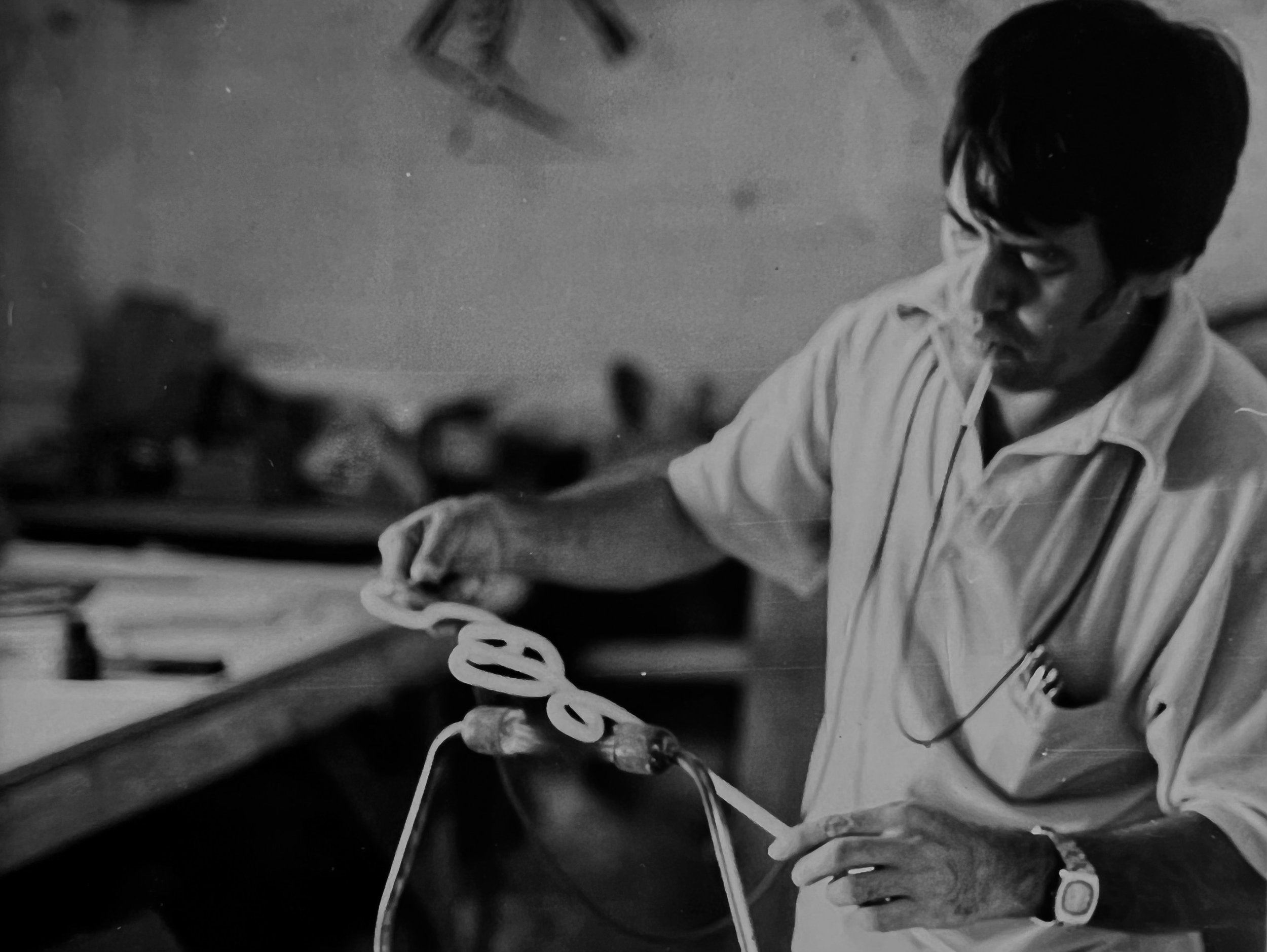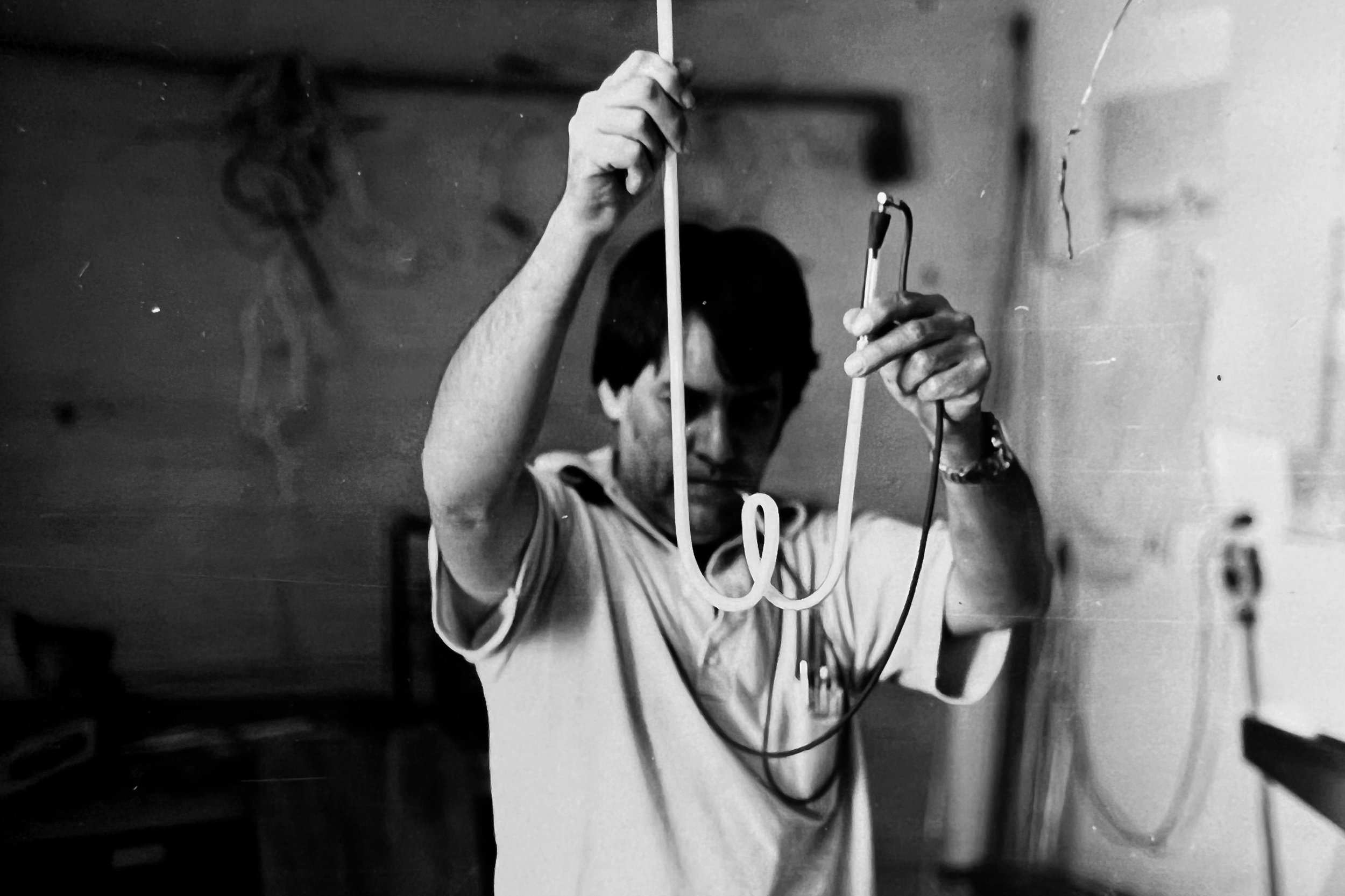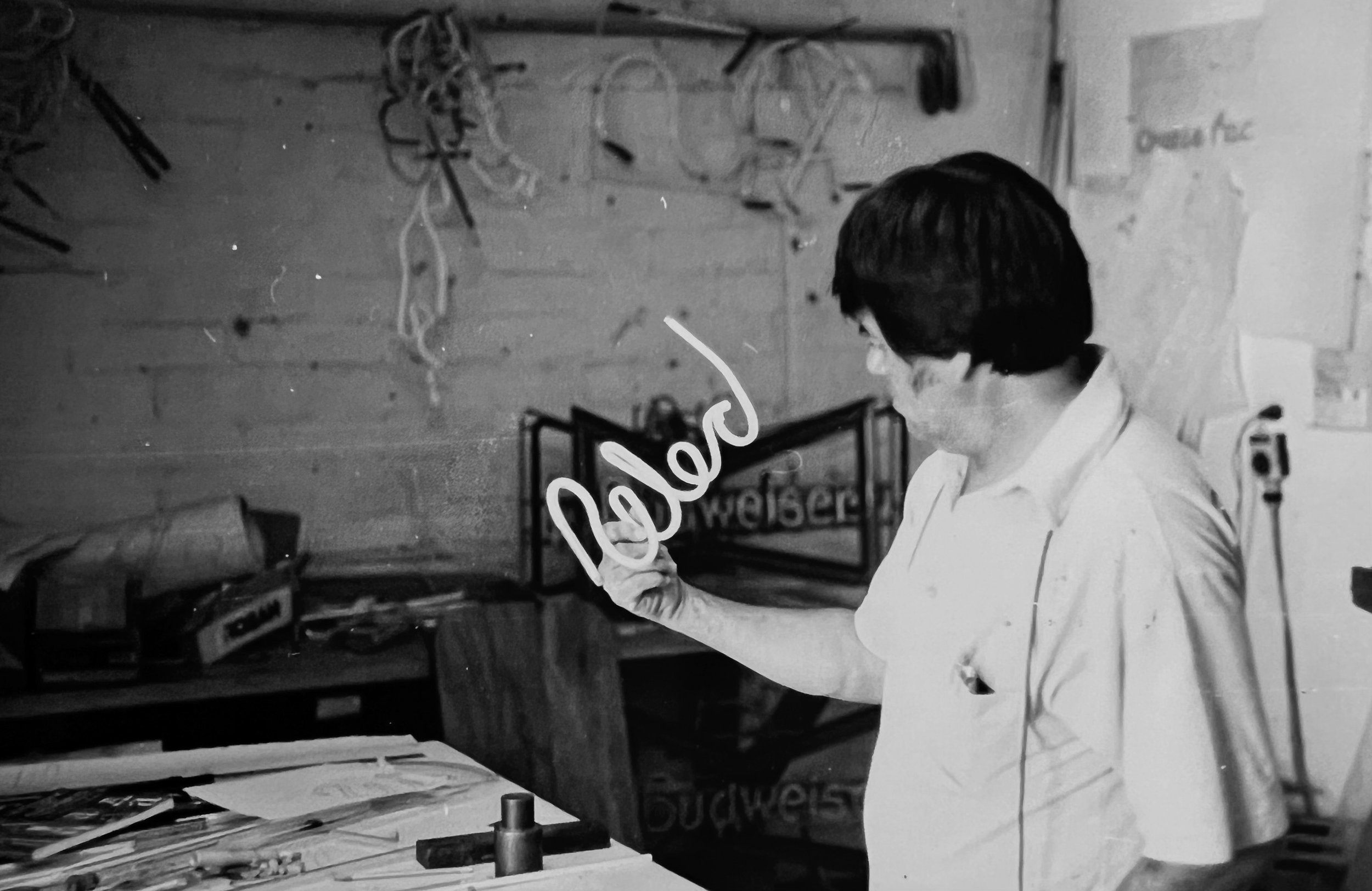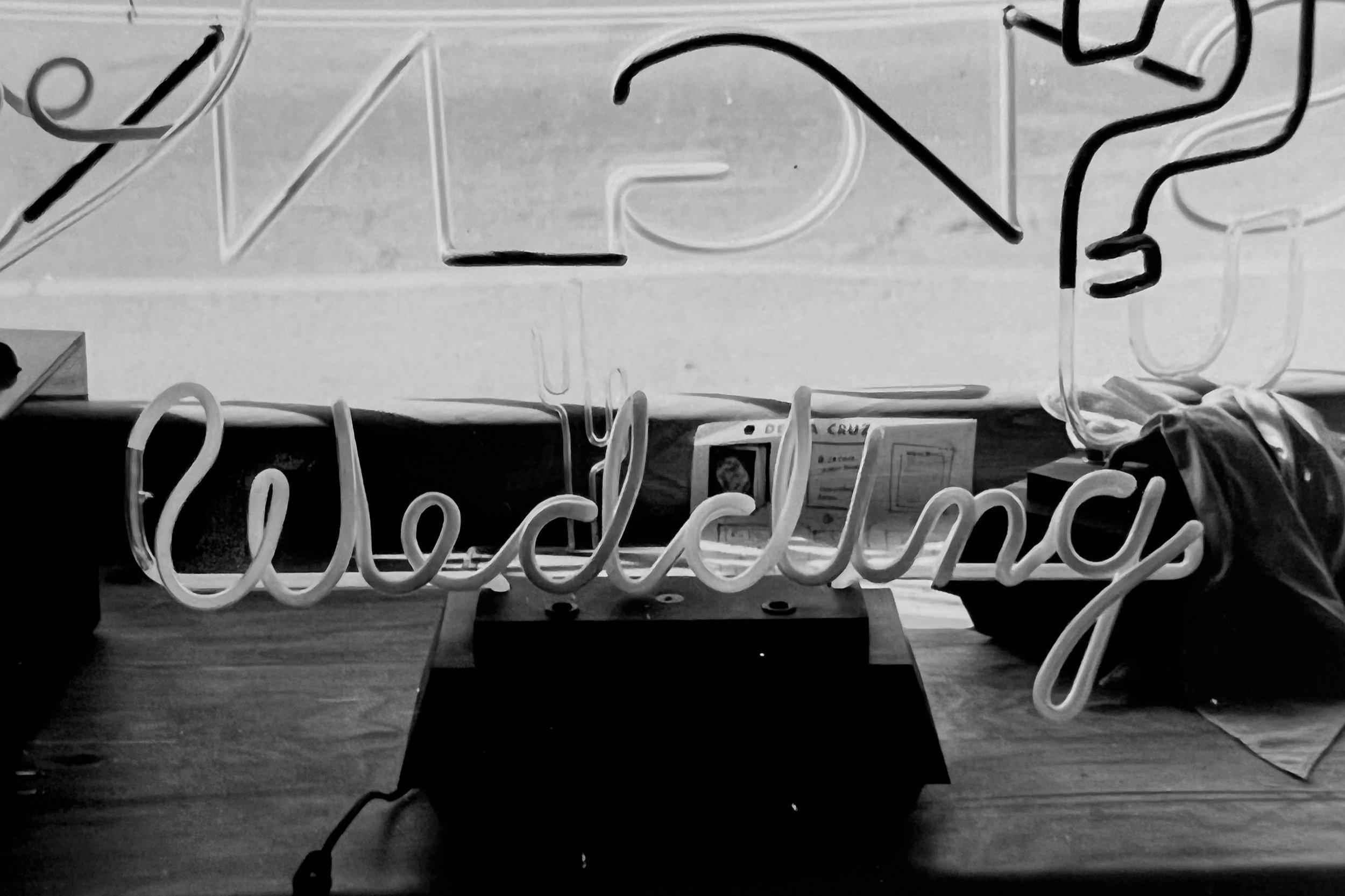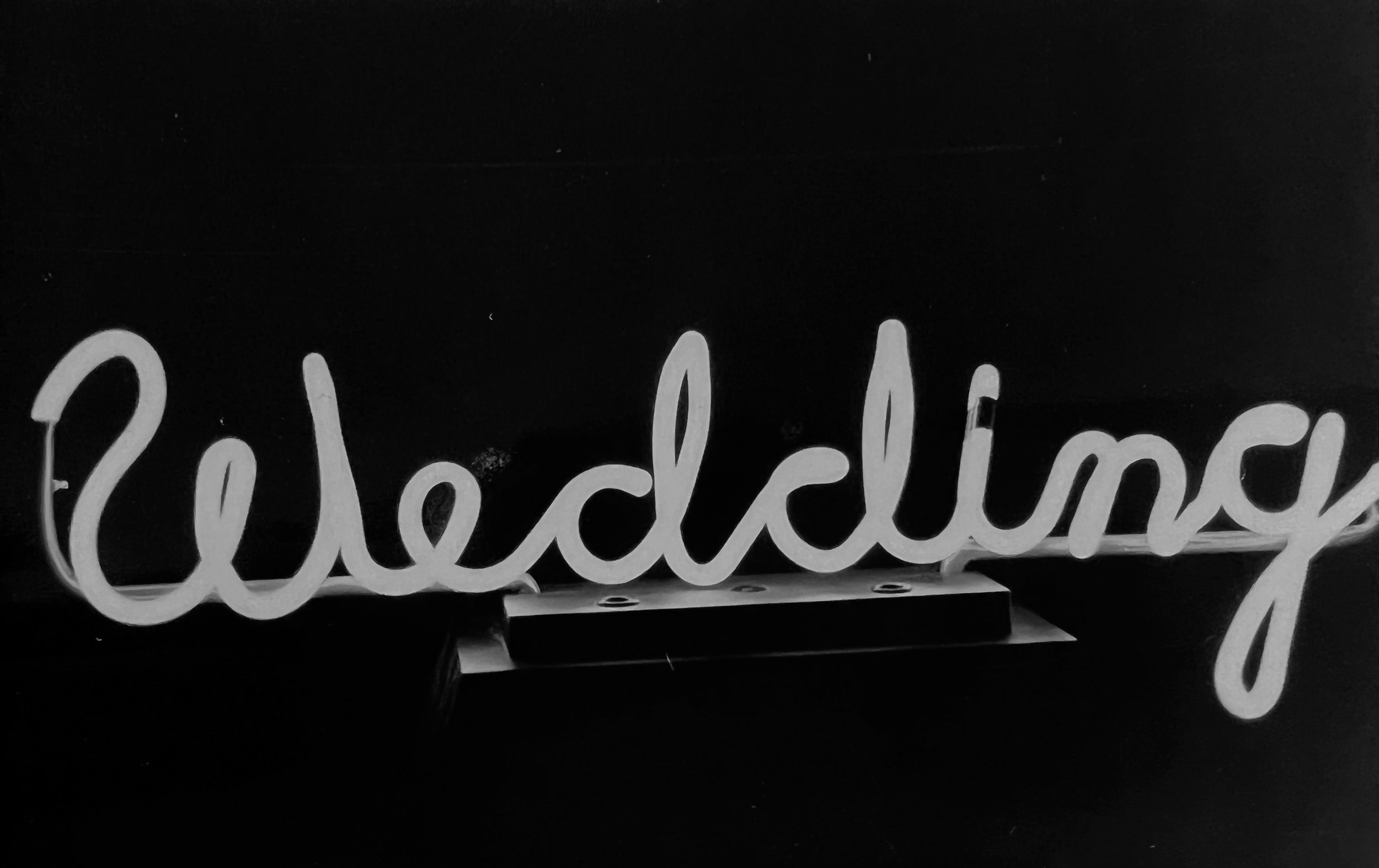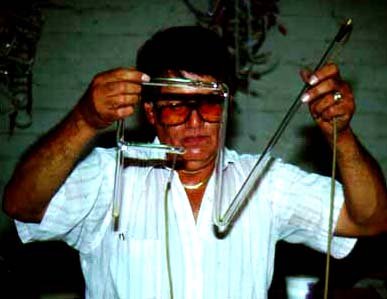The Neon Architecture Sign
By the time I got accepted to the University of Arizona's College of Architecture, neon signs were a part of my family’s DNA. Vacations amounted to taking photos of neon signs (Ektachrome 100, aperture wide open). To take it one step further, the motel or restaurant with the best neon sign would be the establishment we would choose, while we boycotted any business with a Mansard roof. We have slide carousels full of beautiful neon signs from all over the West. Many of those signs are now gone.
The College of Architecture Building was designed in a “modern” style of sorts, but appeared to be reluctantly skinned with the brick required of all University of Arizona buildings. Above the entrance was a bronze sign that read “ARCHITECTURE” in a Times Roman typeface, matching the style of the signs all over campus.
University of Arizona Architecture Building, 1981
After a couple of years of Architecture School, it occurred to me that the bronze sign seemed inappropriate for the building. The college was on the north edge of campus, sitting on the south side of Speedway Boulevard. “Speedway” might be the most “American” street there is, and has consistently appeared on “ugliest street in America” lists. It’s twenty-three miles of gas stations, car washes, banks, houses, motels, sheet metal and air-conditioning shops, a miniature golf course, retirement homes, strip clubs, hospitals, liquor stores, malls, restaurants, and the College of Architecture.
As I saw the world, the Architecture building sign needed to be neon. I ran the idea by my colleague and classmate, Pete. Pete and his wife Sarah had taken me in like a stray dog, and had kept me well fed through the years. Pete thought it was a good idea, and since he was married and a few years older than me, I took that as confirmation, and that was all the approval I needed. It also seemed like a good idea not to let the Dean or any of the Faculty know about it. I announced to the third-year class that we were going to put a neon sign up over the drab bronze letters that were out of context for Speedway Boulevard, as after all, the idea of understanding and responding to “context” had been hammered into our heads by all of our professors.
I told everyone that for $10, they could vote for what color the sign should be. With the money they invested, I would get a sign made and installed. At this point, I had no idea what it took or how much it would cost to get a neon sign made. I started collecting money and color choices. While this venture capital was being hauled in, I took a ladder to the front of the building and did a rubbing over the letters to use as patterns for the neon. I remember the Dean coming back from lunch, stopping under my ladder, and saying, “Jeff, what are you doing?” I said, “I’m tracing the letters on the sign.” He pondered, and then said, “Okay, be careful, let me know if I should hold the ladder.” I said, “Thanks, I will let you know.” We collected as much money as possible, and even went down to first and second year to fatten the pot. Ten bucks was a lot of money when you could get two hotdogs and a pitcher of beer for $4 at Maxie's across the street. When the votes came in, I was somewhat disappointed with the color choice: light blue had edged out pink. There was a sign I loved at a downtown bar called “The Manhattan,” which was the most beautiful multicolored lettered sign I had seen, glowing in the black desert sky. I hid the voting results from everyone and said they’d see the color at the grand opening. They said, “Come on Jeff, let us know the color, we paid ten bucks!” I said, “It’s complicated.”
Now I had to go find someone to make the sign. I looked in the yellow pages for neon sign makers. There was no doubt that “De La Cruz Neon Signs, 888-8885” had by far the best logo. I drove out to the Shop. It was 105 degrees outside, and about 120 degrees inside. There was no air conditioning, and to bend the glass tubes there were four gas burners going full blast. Drenched in sweat, Juan De La Cruz was carefully bending glass tubes and then placing the glowing glass on asbestos patterns and bending the glass to match.
At some stopping point, Juan came up to me and said “Hola, que quieres?” He spoke little English and I didn’t speak Spanish. I showed him the 25’ long tracing and the $350. He pointed to the serifs and said, “Too much, aye, chingada.” Damn, I understood that. We looked at each other, and somehow, we connected. He could tell I didn’t know what I was doing but I could tell he wanted to figure it out. The next day his wife Mary Helen called me and said, “Juan wants to look at your project.” So I drove him to the college to look at the sign, he met a few of my friends and he was hooked. He told me to build a steel frame to hook over the existing sign and we would wire the glass letters to it and hang the whole sign over the letters. “Aye, how are we going to get power to it?” Juan complained. I said, “No worries, I’ll figure it out.” I told Juan what color to make the sign and he started making the letters. I went to the Art Department and they let me use their welder to make the frame. I then used another student’s pickup that was missing the front windshield to transport the 20’ lengths of steel for the sign.
While all this was going on, I was now going to Juan’s house and to his brother’s ranch in the desert near Ajo for boiled dove dinners and parties. Weekends had turned into studying architecture and neon sign repair at some liquor store in Tucson, or hanging out in Nogales, Mexico. One spring, the De la Cruz family drove me to Santa Barbara for Spring Break. I needed to be back by 8am on Monday for a History test. The drive typically took eleven hours, so we left Santa Barbara at 11am on Sunday and twenty-one hours later, we rolled into Tucson. They dropped me off at the university at 7:55 and I got a “D” on the test. Time management was not Juan’s strong suit, nor mine.
Jeff & Juan contemplating a sign
One weekend I climbed up into the soffit of the Architecture building lobby, directly behind the sign. Juan had given me a transformer to install. With the electricity on, I took the top off of a 4 x 4 junction box and tapped into the Exit sign circuit, then added a timer. When Juan completed the sign, we announced a date for what we were calling “The Enlightenment,” which would be Sunday night at 8:00 PM. On Sunday morning, Juan, Pete and I installed the neon sign. I crawled back into the soffit, hooked up the GTO cables from the sign and turned the transformer on. It worked, so we immediately turned it off so nobody would see the color choice. At around 6:00 PM, the street in front of the building started filling up, everyone with a case of cheap beer. The alcohol regulations on campus were a bit loose at this point. Beer and cheap whiskey were flowing and campus security looked the other way. Juan was especially excited, as this was a new type of event for him. I made some sort of speech, and introduced Juan. He got a roaring ovation. The excitement could be felt and heard from a block away. I noticed in the shadows a number of Professors had come out for the event but didn’t want to be seen. The countdown started … 59, 58, 57… and so on. l ran inside and climbed into the soffit ... 3, 2, 1 ... and the sign was on. Trapped in the soffit, I could hear a tremendous cheer of pleasure, joy and defiance. It was multi-colored, matching the Manhattan Bar downtown. We celebrated in front of the sign until midnight and I was asked by many confused and somewhat doubting contributors, “Multi-colored won??” I said “Yes, it was close.”
The crowd finally dispersed, beer cans and bottles scattered everywhere. Juan, Pete and I cleaned up and Juan said, “Jeff–tonight is too good. The sign is too beautiful.” Years later he referred to that whole event as the best day ever. The sign stayed up for years, and I’m not sure when It was taken down. The faculty never said a thing to me except, “That was quite a night” and “Nice sign.”
The Class of 1983
The sign made the front page of The Arizona Daily Star and a couple of years later, they did a Home Page piece on Juan and I.
Arizona Daily Star, April 8, 1981
Arizona Daily Star June 5, 1983
In 1983, we created SIGNS (Students Interested in a Great Neon Society) and took up another collection, hiring Juan to make neon columns for our graduation party.
Mary Helen, Juan, Karin & Jeff, Graduation Night 1983
The De La Cruz family have remained close friends, and made countless visits to Santa Barbara through the years, frequently showing up with about a ten minute notice. Juan made neon for my brother Ron's movie sets, and worked with my brother David and I on neon projects for thirty-four years. He made the neon sign that became the wedding invitation for my wife and I.
Fig Avenue office. Photo by Jason Rick
Juan created the sign at my office on Fig Avenue, and made neon for many of my Santa Barbara buildings including the chandelier under the entry bridge at El Andaluz, with David designing the metalwork. He made a neon version of the Virgin of Guadalupe that's a treasured possession, and custom signs for my daughters after they'd seen something they liked in his Shop.
El Andaluz Courtyard with Neon Chandelier, Photo by Jason Rick
Photo by Tom Moore
Sadly, Juan died in 2018. There were so many people at his funeral, so many stories to tell. He was a great man. We will miss him always.
